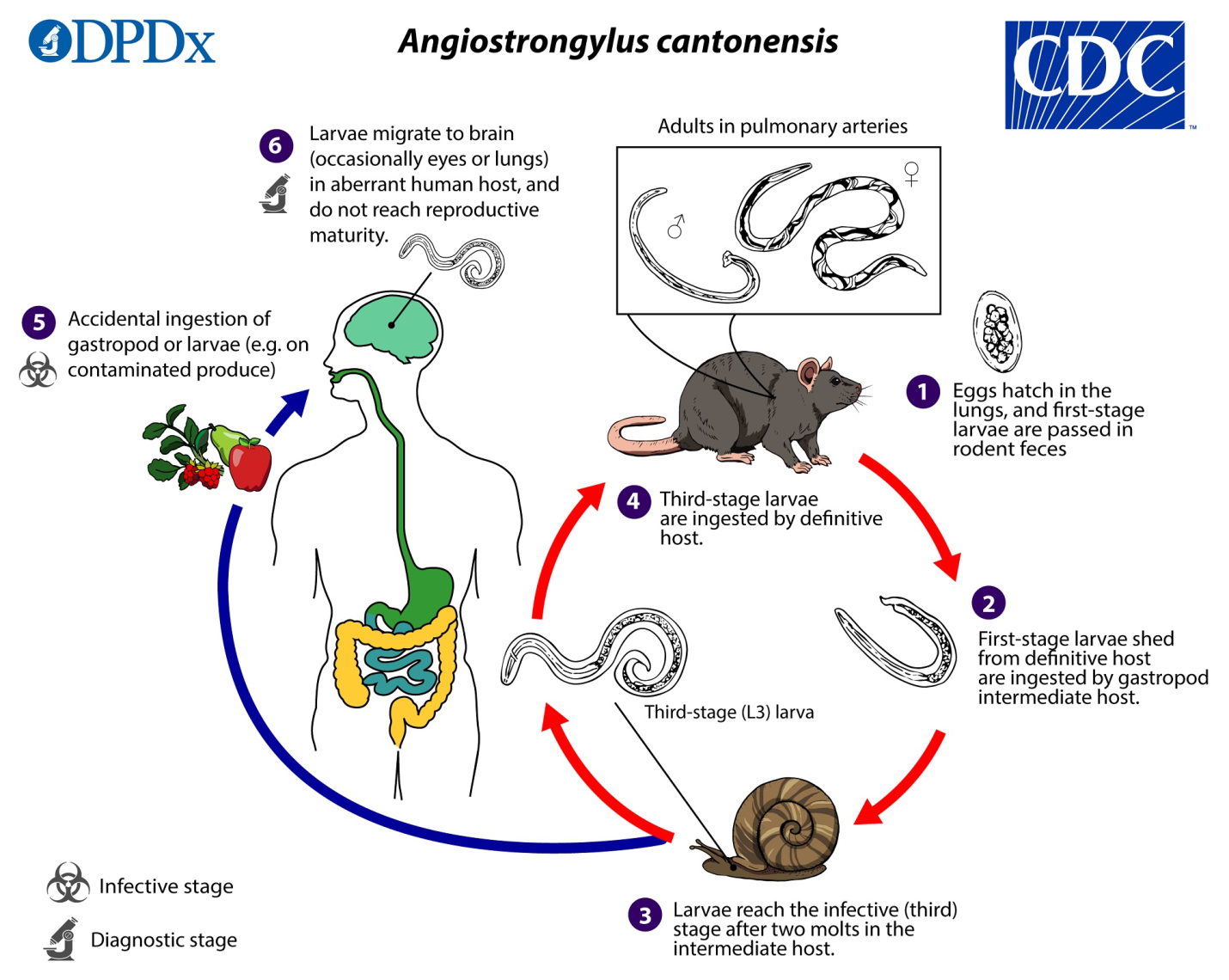Free Courses Sale ends Soon, Get It Now


Free Courses Sale ends Soon, Get It Now



Copyright infringement not intended
Picture Courtesy: www.cdc.go
Context: The spread of the rat-borne parasitic worm Angiostrongylus cantonensis in southeastern America is a concerning issue, as it poses health risks to both humans and pets.
Key Highlights
Conclusion
|
PRACTICE QUESTION Q. The term “Angiostrongylus cantonensis” is frequently seen in the news, it is related to: A) A type of rat poison B) A Parasitic worm C) A bacterial infection D) A fungal disease Correct Answer: B Angiostrongylus cantonensis is a parasitic worm primarily found in rats. It is commonly known as the rat lungworm. |
© 2024 iasgyan. All right reserved